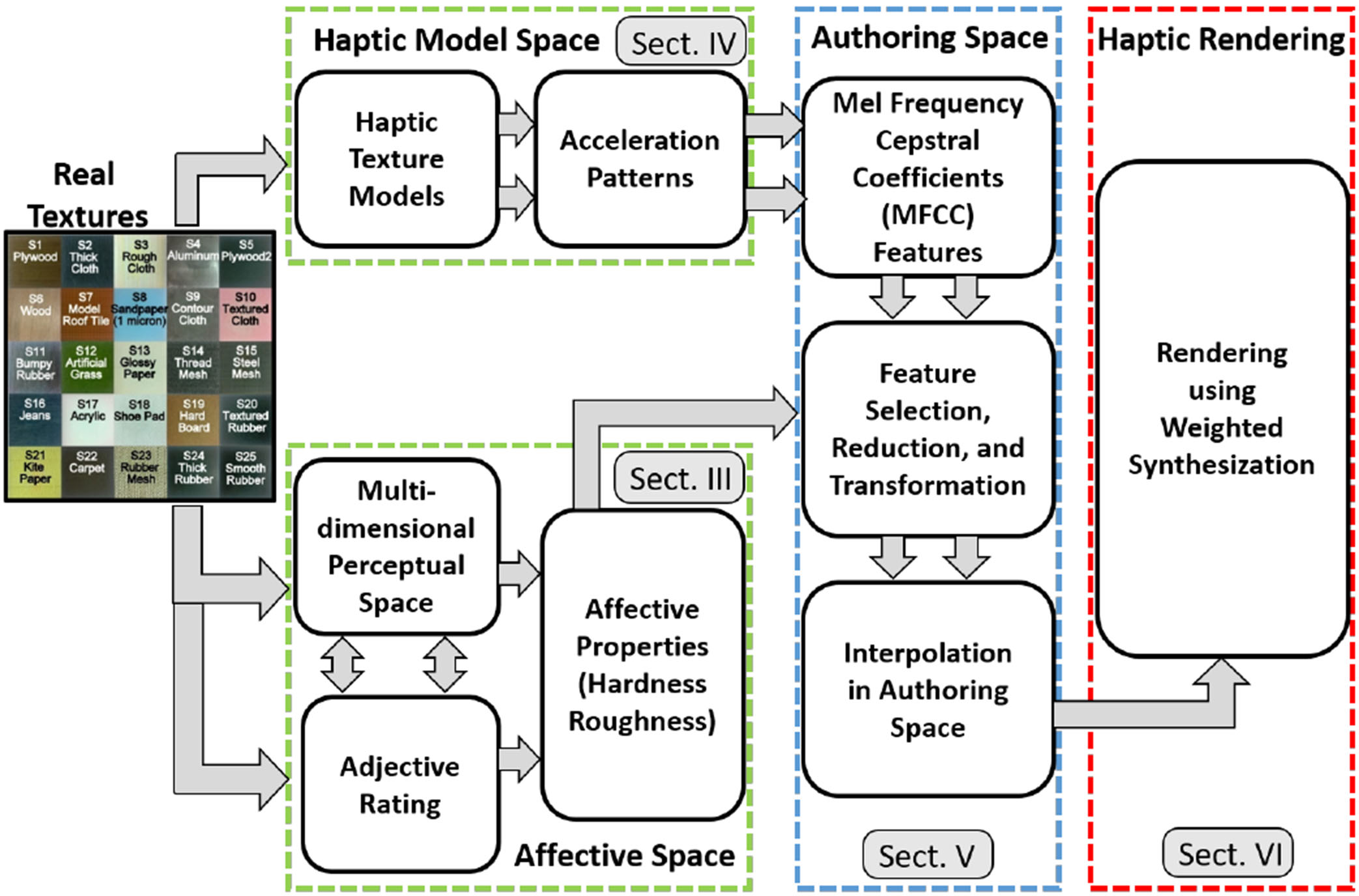Hassan et al. Texture Authoring

Tool Summary
| General Purpose Information | |
|---|---|
| Year of First Releaseⓘ The year a tool was first publicly released or discussed in an academic paper. | 2020 |
| Platformⓘ The OS or software framework needed to run the tool. | Unknown |
| Availabilityⓘ If the tool can be obtained by the public. | Unavailable |
| Licenseⓘ Tye type of license applied to the tool. | Unknown |
| Hardware Control Information | |
|---|---|
| Haptic Categoryⓘ The general types of haptic output devices controlled by the tool. | Vibrotactile |
| Hardware Abstractionⓘ How broad the type of hardware support is for a tool.
| Class (Voice coil) |
| Interaction and Interface Information | |
|---|---|
| Driving Featureⓘ If haptic content is controlled over time, by other actions, or both. | Action |
| Effect Localizationⓘ How the desired location of stimuli is mapped to the device.
| Device-centric |
| Media Supportⓘ Support for non-haptic media in the workspace, even if just to aid in manual synchronization. | None |
| Iterative Playbackⓘ If haptic effects can be played back from the tool to aid in the design process. | N/A |
| Design Approachesⓘ Broadly, the methods available to create a desired effect.
| Description |
| Interaction Metaphorsⓘ Common UI metaphors that define how a user interacts with a tool.
| N/A |
Additional Information
Hassan, Abdulali, and Jeon created an affective authoring space for textures based on 25 models of real materials. These were positioned on an affective space defined by two axes, hard-soft and rough-smooth. New models can be generated interpolated from the original data-driven models and played back on a voice-coil actuator, such as the Haptuator Mark II.
For more information on this method, please consult the 2020 article in IEEE Trans. on Industrial Electronics.